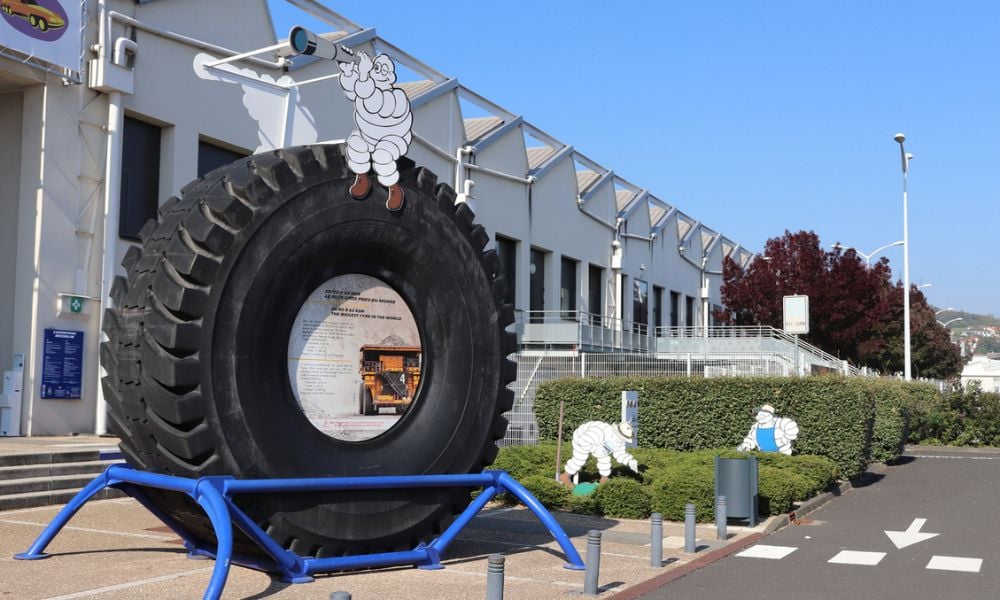You can talk “safety” till you’re blue in the face, but until every person in your organisation lives and breathes a culture of safety, yours will be a high-risk workplace. Teresa Russell examines how organisations can save money and lives in their pursuit of a safe workplace
You can talk “safety” till you’re blue in the face, but until every person in your organisation lives and breathes a culture of safety, yours will be a high-risk workplace. Teresa Russell examines how organisations can save money and lives in their pursuit of a safe workplace
There were 140,655 new work-related compensation claims reported in Australia for the 2004–05 financial year, (17 per 1,000 employees) including 214 compensated fatalities. Although this represents a steady decline, there is still plenty of room for improvement, especially in high-risk industries such as manufacturing; transport and storage; construction; agriculture, forestry and fishing; and mining.
GTS Freight is based in Mildura and operates nationally, specialising in the wine and beverage industry. This private company has doubled in size in the last five years and now employs around 200 people. Its 100 trucks and 250 trailers cover 18 million kilometres each year. “The two areas of greatest safety risk in our business have traditionally been driver fatigue and our maintenance workshop,” says Damien Matthews, managing director and owner.
Bronwyn Griffith started working at HJ Heinz Company Australia in 2002 as health and safety nurse for its Echuca and Girgarre food manufacturing plants in country Victoria. Heinz manufactures its iconic brand of baby food, tomato sauce, condiments at these two facilities. As part of a global company, Griffith has to ensure the plants comply with Heinz’s global health and safety requirements as well as Victorian and national laws.
“We are committed to acting on near misses, not just on accidents that have occurred. It allows us to have a more proactive approach to health and safety,”says Griffith.
Motivating staff
Today’s improvements in health and safety at GTS Freight and Heinz started with initiatives introduced three to five years ago. Matthews says that the strong motivation for a safer working environment came from his desire to become a leader in all areas of business. “In positioning ourselves as a new generation supplier, we have made lots of innovations in workshop maintenance, warehousing and trailer design. These innovations all flow through to the issue of health and safety,”he says, adding that complying or exceeding industry standards in these areas is a useful marketing tool.
“The industry has been brutal in the past, but legislation now restricts drivers to 12 hours in 24 (or 14 if they have completed a fatigue management course) and to have a 24-hour break every week,” says Matthews. GTS Freight now employs two full-time driver managers who manage driver hours. All trucks in the fleet have a satellite tracking system that monitors fatigue, speed, on-time delivery, distance, rest breaks and even whether the ignition is on or off. Matthews says they have also used external auditors to examine “chain of responsibility” and to identify any areas that need to be addressed.
Although these initiatives have been impressive, the company won an award from Worksafe Victoriain 2007 for providing the best solution to a health and safety risk in another area. “We designed and built a new maintenance workshop which addressed the issues we had at the old site of overcrowding, traffic flow, manual handling, slips and high noise levels,” says Angelo Rodi, fleet manager at GTS Freight. We used to have minor injuries like back strain and lots of near misses due to traffic flow in congested areas.
After the first 12 months of operation at the new site, there were no accidents, injuries, near misses or incidents, which contrasted with previous years when they usually had five minor injuries and one major health problem.
At the time of her appointment to Heinz in 2002, Griffith says that, “There was a health and safety system in place, but the company outsourced much of the work. It was unsatisfactory, both in terms of the cost of workers compensation premiums and consultancy costs.
Workers compensation premiums at that stage were running three to four times above the industry average rate. Consultancies can’t offer the same level of responsibility and their systems aren’t necessarily tailored to suit your specific requirements. We’ve worked to develop more of a ‘return to work’ culture through clear communication with workers and providing flexibility in work arrangements,” she says.
Workers compensation premiums at that stage were running higher than the state industry average.
Taking action
GTS Freight formed an in-house team, led by Rodi to develop and design a new $1 million maintenance facility at a greenfield site. The workplace risk assessment identified stress, strain, fatigue and injury associated with manual handling in a confined area as the major health and safety concern.
A suspended ceiling pit system eliminated the need for workers to use low level back trolleys to work under trucks. The design also included a hydraulic floor built to adjust to the correct working height of each worker. The additional fit out, including an overhead gantry, ventilation, non-slip surfaces, retractable hoses and inline pipes also reduced risk. The new design eliminated the need for an overhead pulley, forklifts and tasks such as carrying oil and coolants down steps into the pit. GTS Freight has now patented the design of its elevated floor and has just begun showing it to other interested businesses.
Griffith says that her first task after the consultant was released was to implement a better financial system (to improve payroll controls) and an early intervention safety system, so that risks were assessed and intervention occurred at the time of risk identification. “Injured workers now get a phone call asking ‘What can we do to help get you better and back to work?’ We developed work tasks for people coming back to light duties – work that was valuable and commensurate with their skills,” says Griffith.
Safety became a more visible management priority. “Until then, the engineering, production and safety departments operated in silos. Collaboration enabled a 360-degree approach to safety projects,” says Griffith. This resulted in a lot of really effective safety work on equipment being achieved across departments.
Incident reports (including near misses) and the suggested corrective action required is now filled out by those working on that line, because they know better than anyone how to fix the problem.
Outstanding results
GTS Freight has increased productivity by 50 per cent. Trailer fleet service has gone from 20 per cent each month to 50 per cent, resulting in improved road safety with more preventative maintenance. “Sick leave has reduced by at least 50 per cent because it is now a comfortable environment to work in,” adds Rodi.
“Our workers compensation premium used to be above the industry average [ie over 10 per cent of payroll], but it has now dropped five percentage points to below the industry average [ie lower than 8 per cent]. It is still over $1 million, which is a lot of money,” says Matthews.
Heinz’s annual workers compensation premium has dropped by more than 60 per cent, which is now well below the industry average. Lost-time injuries are reported at a rate per man-hour in each factory. “Our monthly statistics have had 50–100 per cent improvement. We have had no lost time injuries at one factory for seven months now. Absenteeism is not a big problem anymore and our most serious injuries now are cuts on fingers,” reports Griffith.
Key to success
Both companies have now created health and safety committees, pushing responsibility for safety on to each individual worker and department. Both Rodi and Griffith agree that planning and communication, accurate documentation and follow-through are vital. Induction and training of employees and contractors has a strong focus. “You can’t do too much training when you are dealing with people’s lives,” says Matthews.
“Don’t send an email. Go to meetings, do the groundwork, see people where they work, and listen to them – even if it’s at 11pm or 5am. Break down silos and get multidisciplinary teams working together,” counsels Griffith.
Health & safety: the stats
• 140,655 new work-related compensation claims
• 214 compensated fatalities
• 68 per cent of new claims made by male employees
• 11 claims for men per 1,000,000 hours worked
• 8 claims for women per 1,000,000 hours worked
• Labourers and related workers had 48 claims per 1,000 employees
• Intermediate production and transport workers had 34 claims per 1,000 employees
• Advanced clerical and service workers had 4 claims per 1,000 employees
• Manual-handling mechanisms accounted for 43 per cent of all new claims
• Falls on the same level accounted for 13 per cent of all new claims
• Despite a 15 per cent increase in the number of workers in the last 7 years, compensation claims havedropped 13 per cent
Source: Australian Safety and Compensation Council Statistics 2004-05 (most recent statistics published)








